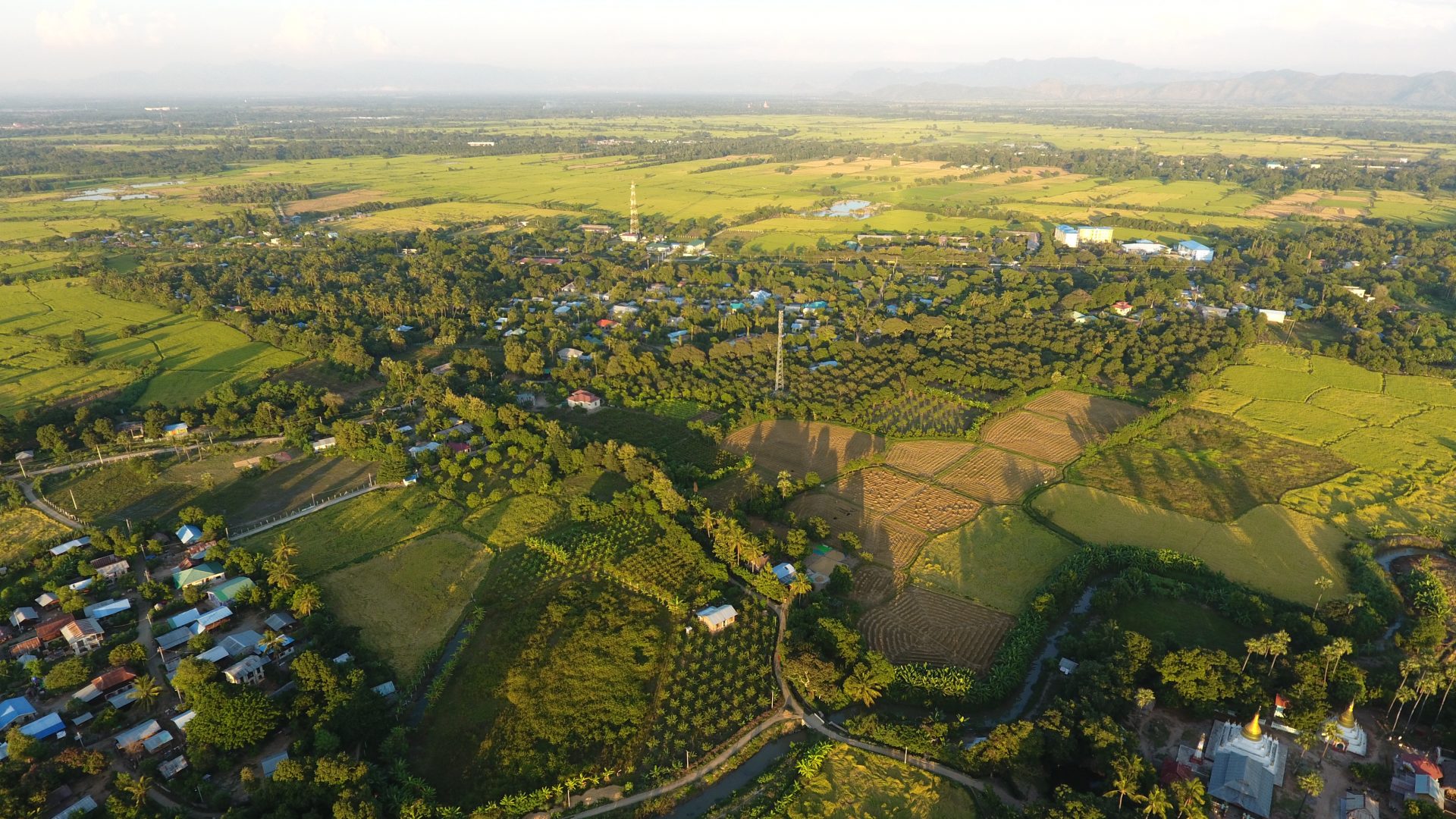A new CDC Bill was introduced to Parliament on 16 November. Here is our briefing on the Bill and what it means for CDC and our work in developing countries.
Commonwealth Development Corporation Bill, November 2016
Comment from CDC’s Chief Executive on the Commonwealth Development Corporation Bill.
Diana Noble, Chief Executive said: “Investment is a powerful way to deliver development and reduce poverty. A strong private sector generates the prosperity that will provide much-needed infrastructure, public services and jobs in developing nations. CDC has supported many now
market- leading
businesses and employers in Africa and South Asia during formative and, often, challenging periods of their early growth. And CDC’s investments have generated good returns over its history, which are then recycled into further investments, making it an efficient use of UK taxpayers money.
The 1999 CDC Act set a limit on the level of financial support that the UK Government can provide to CDC. While raising the limit increases the Government’s options in supporting CDC’s future growth, on its own, the Bill doesn’t lead to any further capital for CDC. All future decisions to invest in CDC will be supported by a robust business case.”
The Bill can be found here. It will receive its Second Reading on 29 November 2016.
CDC briefing on the introduction of the Bill:
The broad case for further investment in developing countries
There is now an international consensus that if we are to achieve the Global Goals for Sustainable Development by 2030, we need to mobilise the private sector to help fill the annual financing gap of $2.5 trillion every year.
No country has ever escaped poverty without its private sector playing a full role in developing a strong economy. The private sector creates the prosperity needed for countries to build infrastructure, provide much-needed public services, and create the jobs that give people the dignity and the means to help themselves.
We believe having a job is one of the best and first steps out of poverty. People living in the world’s poorest countries agree. It ranks third in their top priorities after good education and better healthcare.
The private sector needs a great deal of help in the poorest countries. Businesses lack access to finance and, because of the challenging operating environment, they also need expert advice and support to help their businesses grow. However, while there is demand, many investors and lenders are put off by the higher levels of risk. CDC is one of the few investors in the world with the skills and risk appetite to do this difficult work.
CDC’s role
CDC’s mission is to invest in businesses in the poorest parts of the world to help them grow and create the jobs that will make a lasting difference to people’s lives. We invest in Africa and South Asia because that’s where 80 per cent of the world’s poorest people live. We prioritise investing where growth leads to jobs.
Investment sits alongside other development interventions, such as grant aid, and is particularly well suited to stimulating economic growth that will provide much-needed jobs and livelihoods.
CDC has a challenging dual objective to deliver development impact alongside a financial return. These go hand in hand: if a business isn’t viable and profitable it won’t maintain jobs and livelihoods over the long term.
Last year, the businesses CDC invested in helped create over a million new direct and indirect jobs and paid $2.6 billion in local taxes. Our activity also encouraged US$832m of additional private sector investment.
We are wholly owned by the British taxpayer and our investments not only have a powerful development impact but also generate a return, which is recycled into future investments, making each pound invested go further.
The purpose of the Bill
The CDC Act 1999 limited the amount of money the Government could invest in CDC to £1.5 billion, and after 17 years this has now been reached. By raising the limit, we will have the flexibility to meet the growing demand for investment in developing countries and build on the recent success of our new strategy.
While the Bill raises the limit, it is not an approval or a commitment to provide CDC with additional funds within any set period of time. Before any amount is agreed, a robust business case will be prepared and agreed by CDC’s Board and DFID, and published for public accountability. Any business case will show how further investment will continue to achieve value for money, clear development impact and ensure we are responding to market needs.
CDC since 2011
A new development-focussed strategy
- CDC has been reformed over the past five years incorporating recommendations from a public enquiry and an International Development Select Committee report. Under this new strategy, development is placed at the heart of what we do.
- Our mission, agreed with DFID, is to support the building of businesses throughout Africa and South Asia to create jobs and make a lasting difference to people living in the poorest parts of the world.
- To achieve this, we must generate a modest financial return: a business must be viable and profitable if it is to create jobs that will last.
- CDC invests responsibly, with international environmental, societal and governance standards, which gives confidence to other commercial investors to follow.
Focussing on jobs and the hardest geographies
- New objectives agreed with the UK Government in 2011 ensures support is now targeted to countries where it is needed most and where it can have the most development impact, through job creation. The jobs challenge is significant, for example Africa needs 15 million new jobs every year to achieve the Global Goals.
- We’ve developed a methodology for assessing each investment opportunity for its potential to create employment and the difficulty of the geography. This maintains a focus on development impact in a way that is both objective and quantifiable.
- 66% of our disbursed investments last year went to the poorest and most difficult countries within our geographies. CDC dedicates more of its portfolio to investments in fragile and conflict affected states than any other DFI or multilateral investment body
- We prioritise investing in sectors where growth leads to jobs. Last year the businesses we invest in helped create 1.03 million new jobs in Africa and South Asia.
- It is relatively early days in demonstrating the impact of our new investment strategy, as results from new investments made since 2012 will typically take five to ten years to materialise fully. In the meantime, we’re carefully tracking actual results over time.
- The new strategy is showing a shift in the portfolio towards priority, job-creating sectors and more challenging geographies. And we’re conducting major evaluations about how our investments make a difference – and can be better targeted, for example our recent independent report on the link between power and jobs in Uganda recommended focussing investments on connecting mini and regional grids to national grids and trying to employ private sector capital and expertise into the transmission challenge (i.e. getting power from the generating site to sub-stations).
How is CDC’s success and development impact measured?
- In 2015, businesses CDC invested in raised $2.6 billion in taxes to help support public services like health and education in developing countries. The power companies we invested in generated 56,400GWh of electricity last year.
- We aim to crowd-in private capital into the countries we invest in by demonstrating that investments in these markets can be commercially viable. In 2015, CDC committed $350m to investment funds which helped bring in a further US$832m of private sector investment;
- The businesses in CDC’s portfolio in Africa and South Asia helped create 1.03 million new jobs. Overall they supported 17.9 million jobs. The portfolio itself directly created 25,000 new jobs.
- This was a job creation rate of 6.1 per cent. This rate appears to have exceeded the rate experienced in many larger economies. For example, Nigeria’s economy-wide job creation rate was 1.5 per cent and South Africa’s equivalent figure was 1.3 per cent.
- We clearly explain our approach in our Annual Review and we’re careful to explain the difference between direct and indirect jobs.
- Indirect jobs are created/ supported in three different ways:
- In supply chains. By buying more goods and services, jobs are generated within suppliers.
- Through local wages. Workers spend their wages locally, stimulating more jobs.
- Through better access to infrastructure and finance. Removing barriers such as no access to power, poor transport links or limited access to finance stimulates economic activity, which leads to job creation.
Performance targets
CDC’s performance is measured against two targets set by DFID in our Investment Policy. The targets require CDC to:
- Deliver a significant development impact (above 2.4 out of 4 as measured by CDC’s Development Impact Grid which was developed by DFID and external experts to score each investment before it is made on the difficulty of the country where the investment is made and the propensity of the particular business sector to generate employment directly and indirectly).
- Make a positive portfolio-wide financial return (above 3.5 per cent gross return on a ten year rolling average) ensuring CDC can invest in more promising businesses. CDC has exceeded both targets:
– Over the last five years our average annual return has been 7.8 per cent (target 3.5 per cent)
– Our Development Grid score has been 3.05 out of 4 (target 2.4)
- All development impact scores are externally assured annually, with an independent Report to the Board confirming the three-year aggregate DI score against the corporate target.
- CDC has also commissioned and published a number of evaluations that have assessed the impact of its investments in specific sectors. See https://www.bii.co.uk/The-difference-we- make/Performance/
Transparency of our investments
- In 2011, CDC adopted a new Transparency and Disclosure Policy. We now disclose a wide range of corporate and institutional information, as well as information about partners, investments and development impact. The information published on our website often goes over and above the data provided by other DFIs.
- CDC has an online database of all its investments, which allows users to search for and discover information about each of CDC’s underlying investments, including the name, description, location, sector, CDC commitment, date of first investment, fund and fund manager associated with the investment.
Tax
- We never use off-shore financial centres to avoid tax. We use them so that we can invest alongside other international investors, which often requires the use of a third neutral nation to hold the investment. Where we can we invest directly, we do. But the reality is that many developing countries do not yet have stable administration and legal systems necessary to do this. We look forward to the time we can work through onshore financial centres in the markets where we invest.
- In 2013 we introduced a new policy on offshore financial centres, which means we actively avoid making new investments through jurisdictions deemed harmful by the OECD’s Global Forum.
- Mauritius and the Cayman Islands are approved by the OECD Global Forum.
- The beneficiaries of our capital is always the business in the nation where we invest.







